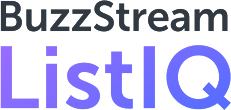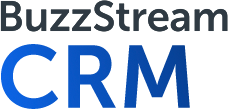Articles in Research and Data Studies
Agency-sent email addresses have ~15% higher open rates, largely due to more effective subject lines and pitch content.
Brand email addresses drive ~60% more replies, likely due to built-in authority and perceived credibility.
Best performance came from agencies sending from brand domains.
Read more
0 comments
8–9 AM local time sees the highest journalist email engagement across most major media domains.
Monday is the top-performing day for both opens and replies, especially among freelancers and UK-based journalists.
Freelancers show broader engagement throughout the week but still peak around Read more
AI Mode finds valid journalist emails only ~44% of the time, with ~69% of those verified as deliverable.
AI's email guesses based on pattern matching are often incorrect due to journalist turnover and media brand ownership.
AI Mode pulls from public sources like PDFs, social posts, and websites, Read more
Average monthly contract: $5,458 across all respondents. Most retainers fall under $10K per month, with half priced below $5K.
Average cost per link (CPL): $597. Costs vary widely by service type, ranging from $150 for guest posting to $800 for large hero campaigns.
1 in 3 respondents don’t Read more
"Most" and "Best" surveys average 10+ more links due to shareability and passive link-building from search queries.
Timely surveys outperform evergreen ones in average links, but evergreen content builds consistent, long-term authority.
Emotionally charged topics—especially joy, curiosity, Read more
Reddit and Wikipedia dominate ChatGPT visibility across nearly all major datasets analyzed.
Forbes, TechRadar, and Business Insider consistently appear, suggesting strong domain authority and topical relevance.
OpenAI data partnerships don’t guarantee increased visibility in ChatGPT outputs.
Read more
Over 85% of guest post sites are low-quality, with poor traffic and DR, yet still command premium prices.
High-quality guest posts (DR 71+ & 50K+ traffic) make up just 4.6% of the marketplace.
Average guest post costs $365—but quality posts range $692–$957 before vendor markup.
The Read more
Qwoted dominates for volume and quality, offering the most media requests and the highest share of DR 80+ opportunities.
Twitter/X and LinkedIn have 82% outlet overlap, making it redundant to monitor both for journalist requests.
HARO has the highest cross-platform overlap, underscoring its Read more
Subject lines with 9–13 words and 71+ characters have the highest open rates (up to 40.71%).
Phrases like “Study finds” and front-loaded brackets boost open and reply rates significantly.
Exclusives and publication mentions drive higher engagement, yet they remain underutilized by most Read more
Freelancer emails have low open rates but the highest reply rates, especially Gmail, at 4.88%.
National news outlets dominate outreach but have lower engagement due to inbox saturation.
Australian and UK journalists reply more often - local relevance and exclusivity increase success.
US Read more

 End-to-end outreach workflow
End-to-end outreach workflow


